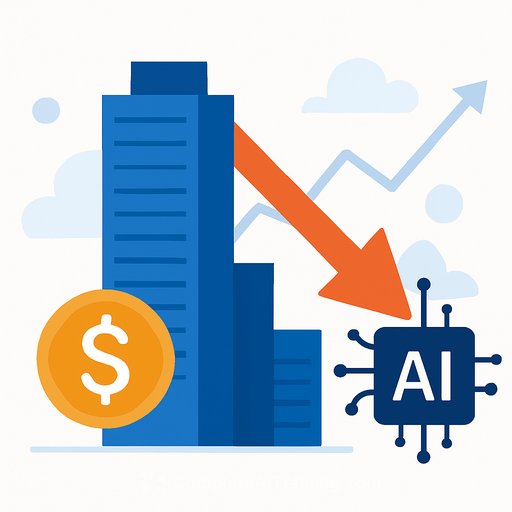AI vs. AI in Health Insurance: What Counterforce Health Means for Payers
For Neal Shah, the breaking point came during his wife's cancer treatment. The stack of bills, denials and policies pushed him into a months-long investigation into why claims get rejected and how often it happens. That work led to CareYaya, then to Counterforce Health - a free platform that generates insurance appeal letters in minutes.
Why this matters to insurance professionals: AI is now working both sides. Insurers use automation to review and deny claims at scale. Counterforce uses automation to contest those denials just as quickly. The balance of speed, accuracy and compliance is moving fast.
Denials Are Up. Appeals Are Rare.
Patients pay higher premiums and deductibles, then face refusals for treatments their doctors recommend. According to KFF, ACA marketplace plans denied about 20% of all claims in 2023, while fewer than 1% of denials were appealed. That gap signals friction, confusion and lost trust at the member level.
KFF data on ACA denials and appeals
The Automation Shift
Major carriers have adopted AI tools that scan records, apply coverage rules and issue denials at volume. Investigations have reported near-instant decisions without a physician review in some cases. This is drawing legal, media and regulatory attention, especially around fairness, medical necessity and due process.
ProPublica: Automated denials investigation
Counterforce Health: An Appeal Engine for Patients and Clinics
Shah launched Counterforce to flip the dynamic: upload a denial letter and relevant records, and the system drafts a custom appeal in minutes. It reviews policy language, surfaces clinical evidence and references arguments from successful appeals. Users can edit before submission; the heavy lifting is done.
"Ninety-nine percent of patients or family caregivers do not appeal," Shah said. "Of the tiny fraction who do, 40% win." The message to payers is clear: many denials are defensible, many are not. Automation on the member side will expose that distinction faster.
What Insurance Teams Should Do Now
- Tighten policy logic and documentation: Make coverage criteria explicit, current and clinically aligned. Ambiguity turns into overturned appeals.
- Institute model governance: Apply clear guardrails for any AI that influences denials. Track inputs, decisions and overrides. Keep physicians meaningfully involved.
- Audit denials end-to-end: Sample by condition, provider, and product line. Compare your overturn rate on internal and external appeal levels to find weak points.
- Upgrade denial letters: Use plain language, cite specific policy sections and clinical rationales, and list exact next steps with timelines. Reduce back-and-forth.
- Measure member effort: Track time-to-resolution, repeat submissions, and calls per denial. Lowering friction is a compliance and brand play.
- Create fast lanes for high-need cases: Cancer, rare disease and end-of-life care need rapid review and physician-led escalation.
- Engage with appeal tech: Expect appeal letters that cite literature and policy line-by-line. Prepare templates and internal workflows to assess them quickly and fairly.
- Train your teams: Equip claims, clinical review and compliance staff to work with AI outputs and spot weak denials before they leave the door.
If your teams need structured upskilling on AI literacy and workflow design, see AI courses by job role.
Cost and Access: Why AI Appeals Are Spreading
Appeals are labor-intensive. Writing a solid letter can take eight hours between policy review, coding, and sourcing clinical literature. Hiring patient advocates can cost hundreds of dollars per appeal. Counterforce is free to individuals today, funded by grants and venture support, lowering the barrier for patients to challenge denials at scale.
As AI reduces the cost of a strong appeal to near zero, payer processes will be stress-tested more often. Expect higher appeal volumes, better citations and more scrutiny of policy interpretation.
Clinical Perspective
David Casarett, MD, a professor of medicine at Duke and partner physician with CareYaya, watched his own family face repeated denials for necessary cancer drugs. Their appeals often succeeded because they tracked the details and had clinical expertise. His question lingers: what chance does a single parent with two jobs have without support?
Privacy Notes Patients Will See
Before using an appeal service, patients are told what data is collected and how it's used. Counterforce says it collects insurance details, denial letters and medical background to generate appeals, uses encryption, does not sell data, and shares only with trusted service providers under confidentiality and legal requirements. Expect more patient questions about data security and storage timelines.
How Counterforce Works for Patients
- Visit the site, click "Start Free Appeal," and answer a short intake about the denial.
- Upload the denial letter and insurance details.
- Receive an editable, citation-backed draft appeal for submission.
Why This Matters for Payers
AI has compressed the time it takes to deny and, now, to dispute. That places a premium on clear policies, clinically sound decisions, and audit-ready documentation. The carriers that adapt will reduce reversals, avoid avoidable grievances and maintain trust with providers and members.
The takeaway is simple: improve the quality of the first decision. If you would not stand behind a denial in front of a regulator, a judge or a patient's oncologist, fix it before it ships.
Your membership also unlocks:






